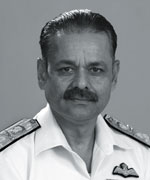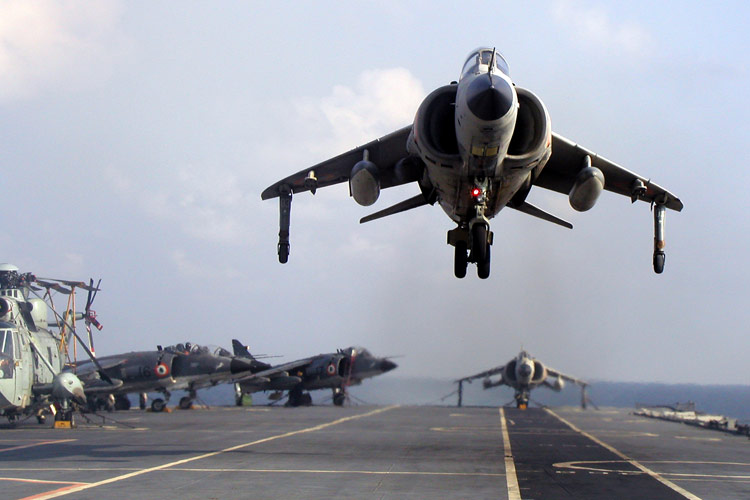Guest Column | Swan Song
 Vice Admiral Shekhar Sinha (Retd)
Vice Admiral Shekhar Sinha (Retd)
Indian naval strategists with combat aviation acumen have long understood the role of fighter aircraft in the context of overall maritime security in the Indian Ocean Region (IOR). This has been proven time and again since 1960. When the Indian Ocean witnessed relative calm under the umbrella of balance of power during Cold War, the only serious security challenge to Indian landmass was from the north-western neighbourhood which had already been well-established.
The government in power appreciated the virtue of self-help and maintained the policy of not being part of any military alliance despite much allurement. The major powers present in the IOR were non-residents and, therefore, for India it was necessary to have maritime security mechanism of protection of own national interest and that of IOR. Since maritime domain has vast expanse over which lies our economic interests, the governments have laboured to build a capable and strong navy. Countries have to deal with their immediate threats without having to wait for doubtful military support from elsewhere.
British Raj had deprived India of the benefits of the Industrial Revolution and, therefore, at the time of Independence the country was handed out relatively poorly-equipped armed forces but a notorious neighbour. As far as the navy was concerned, her immediate role was defined to protect the sea lanes of communication in order to keep the energy routes secure given the proximity of western neighbour to the energy and trade transit routes in the IOR.

Sea Harrier could take-off and land vertically and do combinations of all types of take-off and landing between vertical and fully conventional envelope
Given the fact that our economy has been on an upward trajectory ever since, successive governments have found it necessary to build the capability of the navy and therefore what we see today is a product of vision of our political and maritime leaders. That is how began the process of acquiring the first aircraft carrier Vikrant in the Sixties and embarked fighter and anti-submarine aircraft. The fighter aircraft was the Sea Hawk from the proven design house of Hawker Siddley of the UK.
It was a small Hunter in many ways. Though the British had phased it out, it met our need of preventing any attempt to disrupt the SLOCs far and wide. It was the only aircraft carrier east of Suez making our country the only one with pan IOR reach. Our air technical teams were handpicked and it is to their credit that the last Sea Hawk flew till as late as 1983, roughly for 22 years.
The government also permitted the navy to buy a hangar full of old Sea Hawks and spares from the then West Germany. The pilots of 300 Squadron, the White Tigers as they are called, surprised the Royal Navy by their flying skills. Lt Cdr B.D. Law was the first Commanding officer. It was during the passage of Vikrant from the UK to India that then Lt Cdr Ram Tahiliani became the first Indian Navy pilot to deck land the Sea Hawk. He later on rose to become the chief of naval staff and Governor of Sikkim.
The Sea Hawk had its limitation as far as air defence against intruding aircraft was concerned. It had 20mm Hispano gun which was good enough to bring down a maritime patrol aircraft. Maritime reconnaissance by MR aircraft is prerequisite to all maritime operations. In the vast expanse of ocean, the presence or the absence of a fleet or flotilla has to be established before punitive actions can be planned. The Indian Navy’s philosophy hinged around neutralising the MR aircraft of the enemy even before an action could be commenced by an enemy surface action groups.
With the passag
Subscribe To Force
Fuel Fearless Journalism with Your Yearly Subscription
SUBSCRIBE NOW
We don’t tell you how to do your job…
But we put the environment in which you do your job in perspective, so that when you step out you do so with the complete picture.







